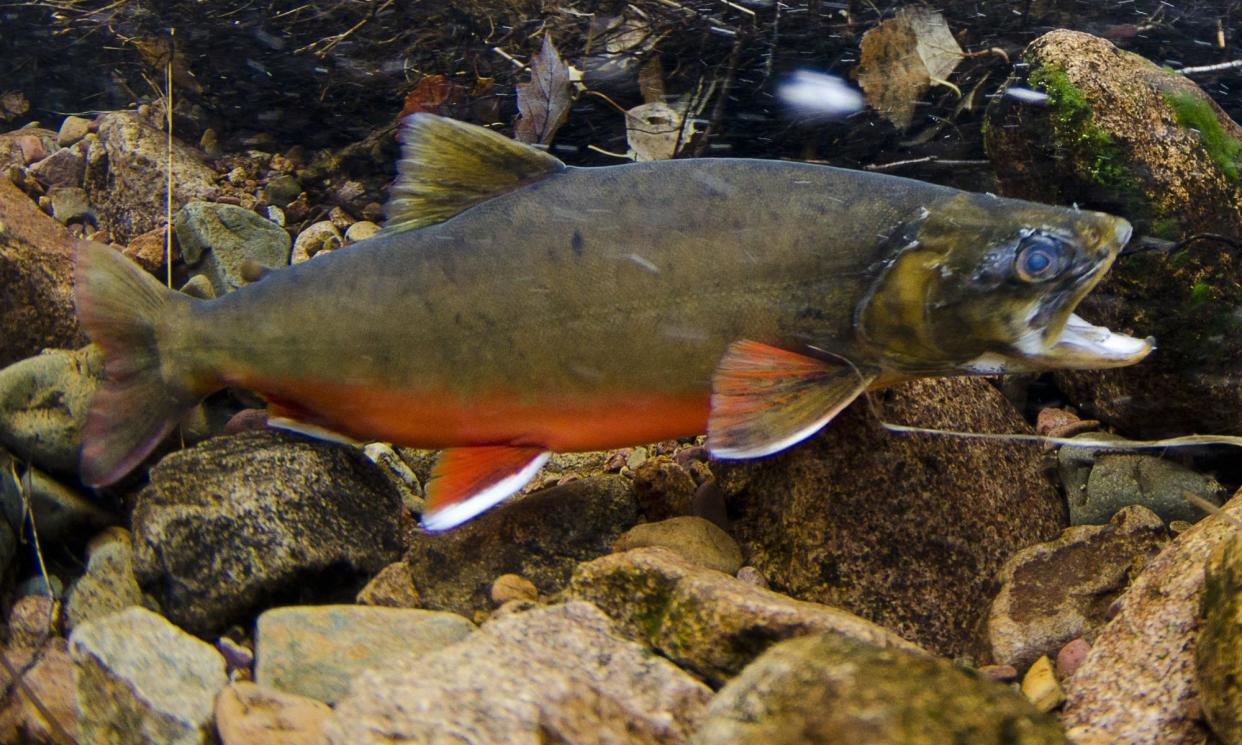Specieswatch: Windermere char under threat from raw sewage

The Arctic char (or charr), Salvelinus alpinus, has for centuries had a special place in Britain’s largest natural lake, Lake Windermere. Since the ice age, when the glaciers retreated leaving behind a deep cold water lake, the char has lived in its depths.
Similar to trout and salmon, the char has always been thought of as a culinary delicacy and for centuries was sold to the wealthier members of British society as a rare dish. Commercial netting was stopped in 1921 and now it is only a specialist angler that will try to lure one on to a hook.
Related: Up to 70 days of suspected illegal dumps of sewage in Windermere in 2022, analysis finds
There are many other Arctic char populations, and it is thought to be the most northerly freshwater fish. Some are elsewhere in the UK, notably in Scotland’s deep lakes, often isolated so long that they were once thought to be different species.
The Windermere char was originally a migratory species, like salmon, but even though they could escape the lake they stay put. They grow slowly and a 10-year-old spawning fish will reach 30cm (1ft).
Their existence and their cultural value contributed to Windermere being declared a Unesco world heritage site in 2017.
Sadly, however, their future is in doubt. Raw sewage from United Utilities overflows has been flooding into Windermere. If this situation continues, the char habitat may never be the same.


